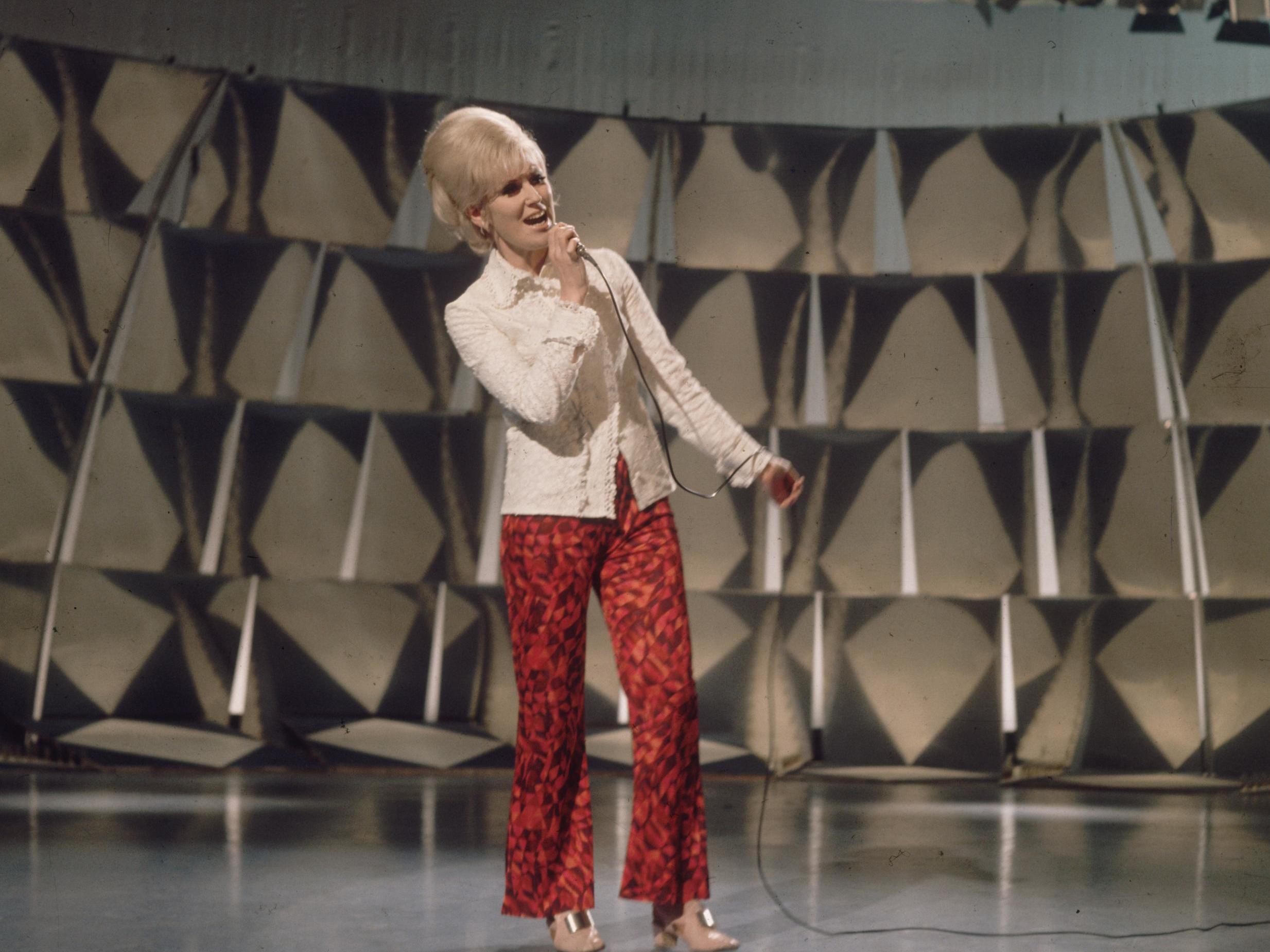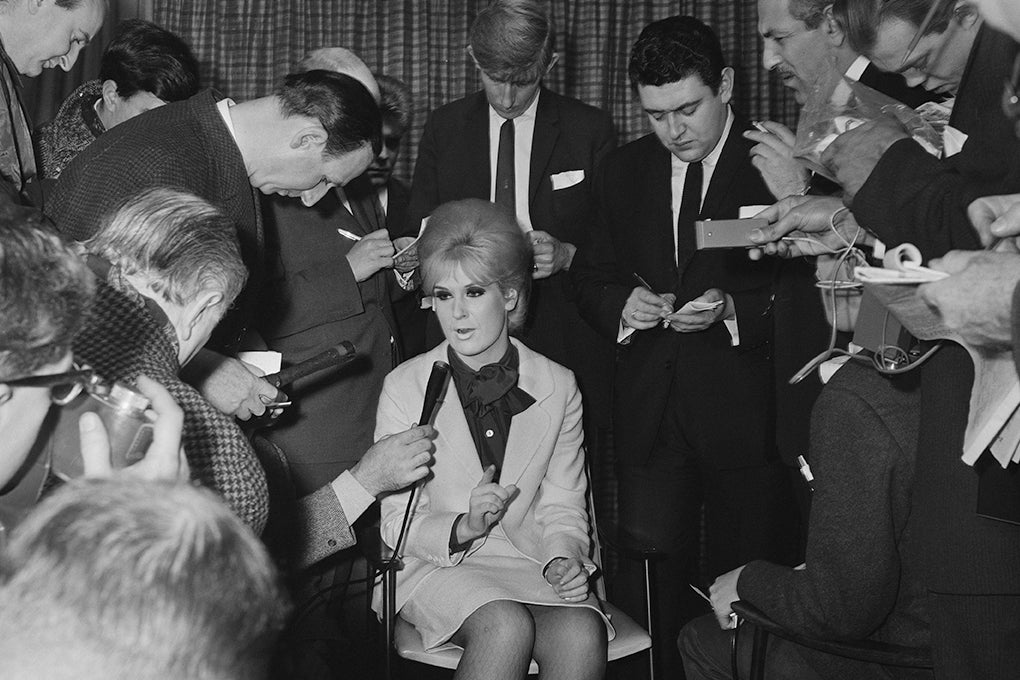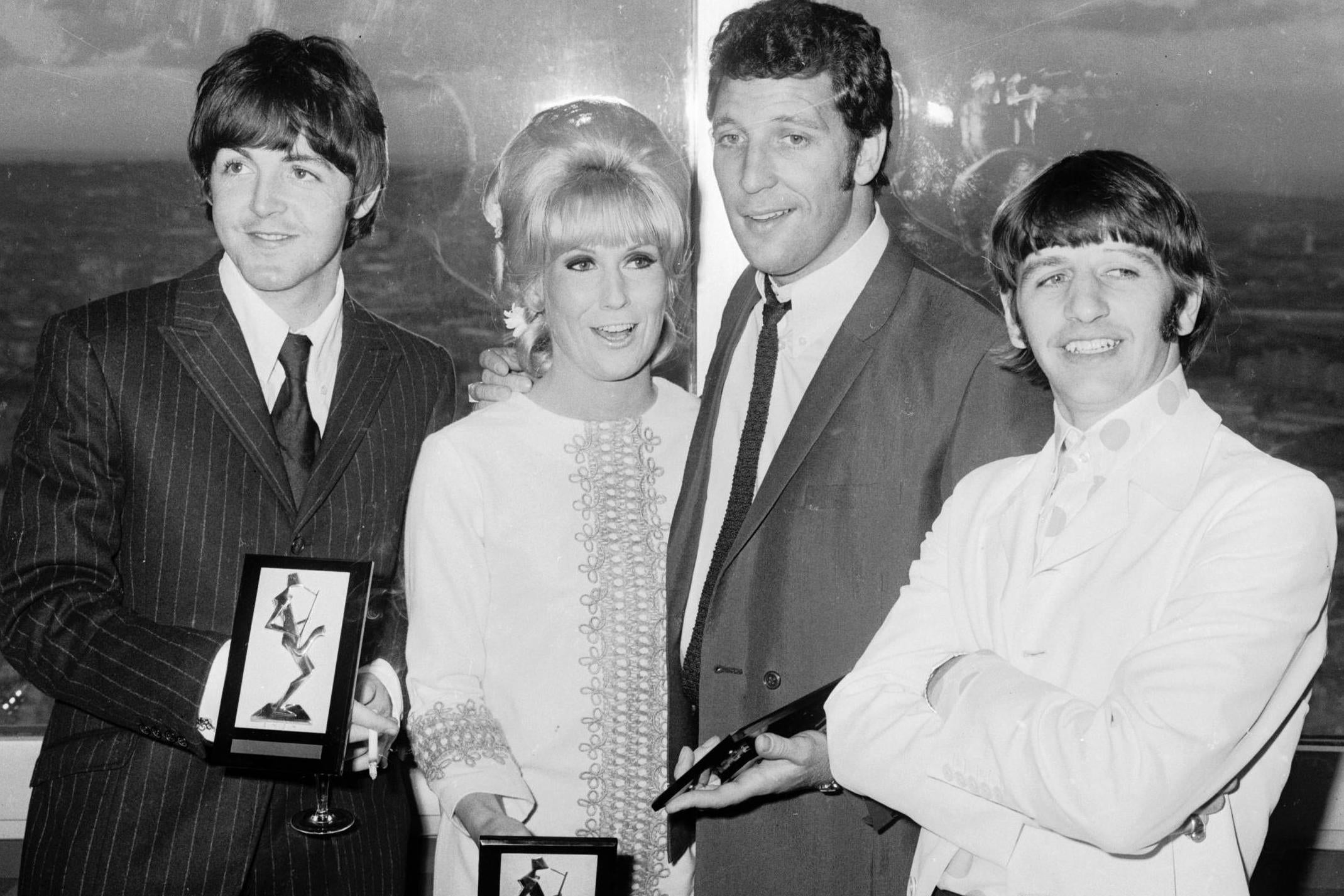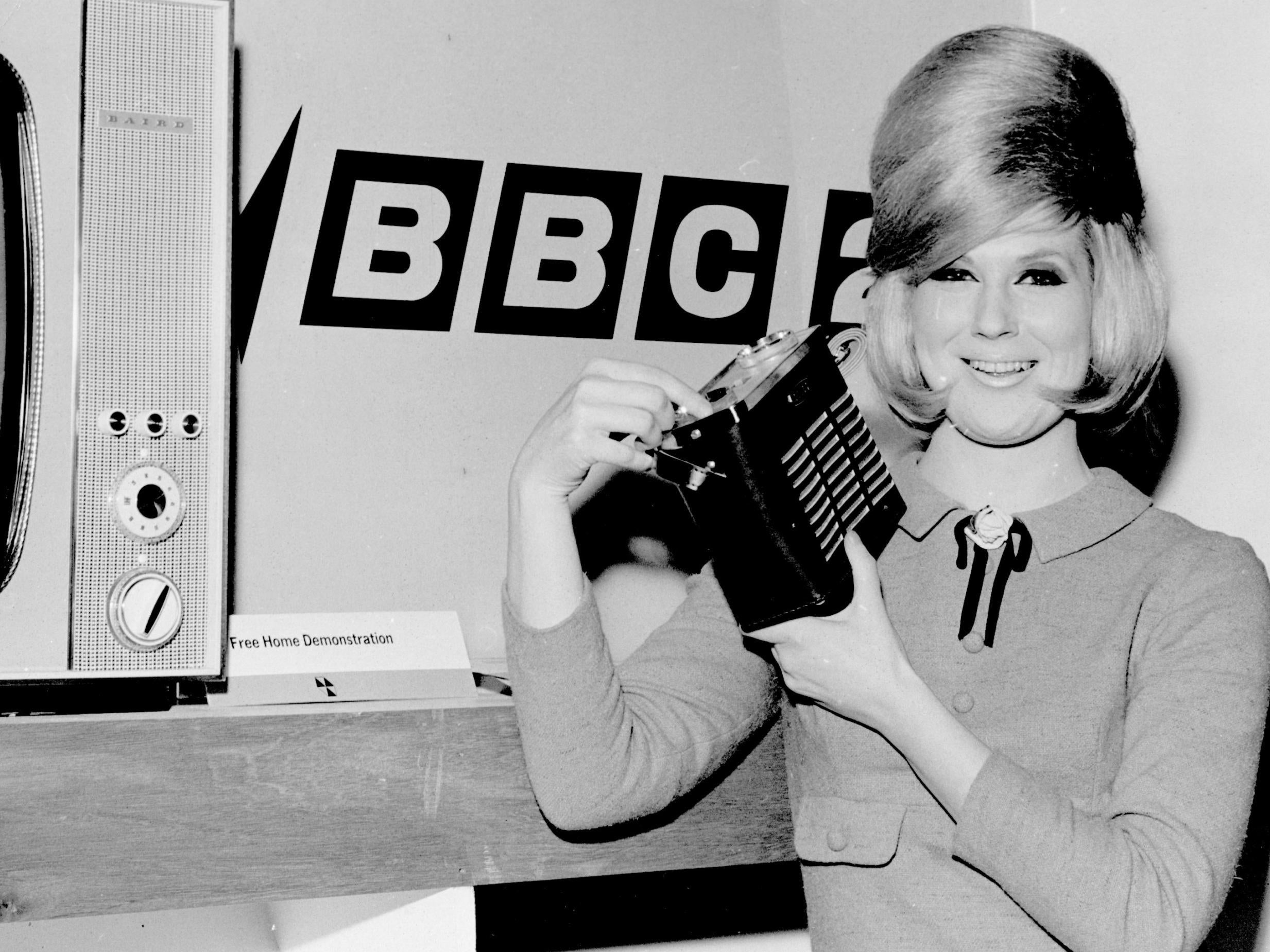A Life in Focus: Dusty Springfield, the Sixties pop star with a voice powered by soul and spirit
The Independent revisits the life of a notable figure. This week: Dusty Springfield, singer, from Thursday 4 March 1999

Your support helps us to tell the story
From reproductive rights to climate change to Big Tech, The Independent is on the ground when the story is developing. Whether it's investigating the financials of Elon Musk's pro-Trump PAC or producing our latest documentary, 'The A Word', which shines a light on the American women fighting for reproductive rights, we know how important it is to parse out the facts from the messaging.
At such a critical moment in US history, we need reporters on the ground. Your donation allows us to keep sending journalists to speak to both sides of the story.
The Independent is trusted by Americans across the entire political spectrum. And unlike many other quality news outlets, we choose not to lock Americans out of our reporting and analysis with paywalls. We believe quality journalism should be available to everyone, paid for by those who can afford it.
Your support makes all the difference.Dusty Springfield was one of the finest singers to emerge from the froth and bubble of the Swinging Sixties. In many ways she epitomised the sound and style of the era. Yet her unique voice, powerful, sensual and rich in passion, had a timeless quality that has proved appealing to new generations of fans.
A contemporary of Sandie Shaw, Cilla Black and Lulu, Springfield was determined to elevate the craft of pop singing by careful choice of material. Her affinity for soul music enabled her to imbue her own singing with its values, without resorting to mere shouting and screaming. She admired the great American performers like Aretha Franklin and Gladys Knight and was selflessly keen to promote their work. However Dusty Springfield, more than the other girls who put their stamp on the Sixties, had a unique power and maturity. This enabled her to interpret songs by composers like Burt Bacharach and Carole King with such force they became definitive versions.
Even now you only have to mention songs like “I Only Want To Be With You”, “I Just Don’t Know What To Do With Myself” and “You Don’t Have To Say You Love Me” and it’s possible to hear Dusty’s voice, sometimes strident, sometimes delicate, her character imprinted on every note.

Dusty, with her blonde beehive hair-dos and heavy “Panda” eye make-up was an instantly recognisable celebrity; an icon of the black-and-white Sixties. Yet many saw this image as a mask to conceal an awkward, insecure woman who needed to be reassured. In fact she was quite capable of defending herself, as critics and detractors soon found. When interviewed in Music Maker magazine in 1966 she was described as Britain’s most powerful answer to the soul sound then sweeping the nation. “Dusty is that rare bird – a singer who knows music well, a singer who has to believe in a song before recording it. A singer with soul. Her reputation in music circles can be summarised in three words: ‘Anything WON’T do!’”
It was Springfield’s determination to extract high standards from her backing musicians, and to brook no nonsense or interference from promoters – and occasionally waiters in restaurants – that earned her notoriety as a “troublemaker”. When cakes and drinks went flying at pop parties and awards ceremonies, it was usually Dusty getting stuck into the mayhem with an enthusiasm that would have won approval from Oasis.
She hit the front page of the Daily Mirror when she threw a cake at a waiter whose manner she didn’t like, at the Melody Maker Poll Awards. But her pranks were usually good-humoured, like her ability to mimic her favourite radio comics the Goons.
The combination of high spirits and high ideals made her good company and good copy. Dusty Springfield was hardly ever out of the headlines during her six years at the top and she seemed destined to become one of the great, perennial performers. This made her slow fade into obscurity during the Seventies all the more distressing. There were some signs of a revival in her fortunes, but the glory days were over.

She was born Mary O’Brien, in Hampstead, north London, in 1939. She and her elder brother Dion began singing together as children in their parents’ garage, where they made their earliest tape recordings. When Mary left school she carried on singing harmonies with her brother, who had began performing at local folk clubs.
In 1957 the pair gained further experience singing at Butlin’s holiday camps. Mary later joined a vocal group, the Lana Sisters, who made some records and backed the singer Al Saxon. In 1959 she returned to work with Dion who had in the meantime teamed up with Tim Field.
A pleasant spring day and Tim’s surname inspired a suitable name for the new trio – the Springfields. It seemed opportune to adopt stage names. Dion became Tom Springfield and Mary was now Dusty Springfield. The group became very popular on the club circuit with their folk-tinged style and in 1961 were signed to Philips Records.
The Springfields had Top Five hits with “Island of Dreams” (1962) and “Say I Won’t Be There” (1963). They also enjoyed American success with “Silver Threads and Golden Needles” which got to No 20 in September 1962 and went straight to No 1 in Australia. The Springfields thus spearheaded the so-called “British Invasion” before the Beatles. In July 1963 they had their last hit with “Come On Home” which peaked at No 31. The group broke up in September 1963 after a farewell show at the London Palladium.
In the aftermath Tom Springfield concentrated on writing while Dusty launched her solo career in fine style with “I Only Want To Be With You” by Ivor Raymonde and Mike Hawker. It went straight to No 4 in the UK in January 1964 and No 12 in the US.
In a burst of activity Springfield recorded her first solo album, went on tour with bands like the Searchers and the Tremeloes, and then collapsed from overwork. But artists lived or died by issuing a steady stream of singles. Her follow-up, “Stay Awhile”, came out in February and got to No 13 in the UK. Then came a trip to the US to appear on The Ed Sullivan Show. Her debut album, A Girl Called Dusty, appeared in April 1964. One of the tracks was “Wishin’ and Hopin’ ”, her next US hit, which got to No 6. Her next UK smash was “I Just Don’t Know What Do With Myself”, followed by “Losing You” which was written by Tom Springfield.
From 1965 to 1968 Dusty Springfield was rarely out of the charts. On “In the Middle of Nowhere”, she was backed by Doris Troy and Alan Price. After “Some of Your Lovin’” and “Little By Little” came “You Don’t Have To Say You Love Me”, her biggest hit, which sold a million and got to No 1 in March 1966. An Italian ballad with English lyrics, it was revived by Elvis Presley in 1970.
Springfield never had another chart topper, but many more fine performances followed, including “Going Back”, “All I See Is You” (1966), “I’ll Try Anything”, “Give Me Time” (1967) and “I Close My Eyes and Count To Ten” (1968).
She seemed to be enjoying her success. But periodic dust-ups hit the headlines. In December 1964 she was invited to tour South Africa. Although clearly against apartheid, she agreed to go, but refused to perform before segregated audiences. In the row that ensued she was deported back to Britain. This drew some criticism from British showbiz artists including Derek Nimmo, who felt that Springfield was needlessly offending prospective employers. She offered them only a sharp rebuke, later describing Nimmo as “a prat”.
In 1965 she appeared on the Royal Variety Show and headlined her own UK tour as well as embarking on a ceaseless round of cabaret, club and television shows. Occasionally she blew her top. The journalist Keith Altham recalled meeting Springfield for an interview at ITV’s Ready, Steady Go! studio.
“She had three wigs for different occasions. Wig Number One was called Cilla, Number Two was Lulu and Number Three was Sandie. I found her tossing one of the wigs all around the dressing room. I said, ‘Hi Dusty, am I interrupting something?’ She said: ‘I’m just giving Cilla a good kicking!’ The odd thing was you wouldn’t recognise Dusty without her wigs, false eyelashes and makeup. I think that was a kind of mask that helped give her confidence.”
However Springfield wasn’t afraid of Buddy Rich, the tough-talking American jazz drummer who insulted her when they appeared on a show together in New York.

Altham remembered: “There was a row about the billing. She wanted her name to be the same size as Buddy’s. She climbed a ladder outside the theatre to alter the sign. He called her a name and she whacked him one!”
Springfield, says Altham, had a vulnerable, childlike quality. “She was rather like Marilyn Monroe in that sense. She was quite humble about her singing and really didn’t think she was any good.
“But of all the Sixties girls she was the best and had a very special talent. She later led a rather lonely, isolated existence and I thought it was a big mistake to duck out of the public eye when she went to live in America. She just seemed to lose all her confidence.”
Springfield toured the world in 1967 performing in cabaret in London, New York, Australia and Japan. That same year her third album, Where Am I Going, included versions of Bobby Hebb’s “Sunny” and Aretha Franklin’s “Don’t Let Me Lose This Dream”. She was voted Best Female Vocalist in the New Musical Express annual awards for five successive years, and she was given her own BBC television show on which she cheerfully introduced such favoured guests as Jimi Hendrix, Tina Turner and Scott Walker.
In 1968 she switched from Philips to Atlantic Records and in September cut an album in Memphis. Using American musicians, Springfield found the funky backing sound she had always wanted. These sessions produced the celebrated Dusty In Memphis album which featured tunes by Randy Newman, Goffin & King and Bacharach-David. It also included the last of her big hits, “Son of a Preacher Man”. Released in December 1968, it got to No 9 in the UK and No 10 in the US. Many years later the song was featured on the soundtrack to the 1994 Tarantino movie Pulp Fiction.
Springfield relocated to America in 1970 and thereafter recorded only sporadically and received practically no recognition in Britain. An interview she gave to the London Evening Standard in 1975, in which she hinted at her sexual orientation, resulted in a cooling of popularity at home. Certainly she found the intrusion into her private life unpleasant.
She said later: “I have been extremely hurt by people saying things about me. I have a certain pride in myself as a woman and it upsets my femininity. I can’t stand to be thought of as a big butch lady. I’ve done nothing wrong and I refuse to invent a relationship to appease people.”
By now her health was poor and she suffered from depression. Moving to Los Angeles, she spent more time campaigning for animal rights than recording. She bought a house on Laurel Canyon and tried to fit into the suburban scene. “It was sort of nouveau riche,” said Springfield. “The trouble was – I was not very nouvelle and not very riche.”
In 1973 she signed with ABC/Dunhill and recorded her eighth album, Cameo, and released the singles “Who Gets Your Love” and “Learn To Say Goodbye”. They weren’t a success. “I felt totally alien in Los Angeles,” she said. “I wasn’t proud of the sounds coming from my throat. I didn’t think I could tell what the good songs were any more. When things started to go wrong, I got depressed and lost a couple of years.”
Between 1974 and 1977 she did no recording at all and began to drink heavily. Then she took a grip and started to piece her life together. She even took singing lessons. However “comebacks” in the late Seventies and early Eighties failed to take off. She needed a kick-start to her career. Help came from an unlikely source. In 1987 she was invited to London record with the Pet Shop Boys. The result was her first chart appearance in years when she guested with Neil Tennant and Chris Lowe on their single “What Have I Done To Deserve This?”, a No 2 hit in both the UK and the US. “That was a watershed in my life,” she said.
Springfield hadn’t known who the Pet Shop Boys were but liked their “West End Girls” when she heard it on the radio. She didn’t know quite what the group wanted, but Tennant explained they just wanted to hear that husky, breathy voice. She later went on to record “Nothing Has Been Proved”, the Pet Shop Boys’ theme tune to the 1989 movie Scandal – for which Springfield made her first promo video.
Springfield now came back from California to live in England with her cat, Nicholas. Her return was celebrated with a BBC biography, Dusty, screened in May 1994. A new album, A Very Fine Love, was released in 1995 and showed her singing as well as ever. Then, just after she had completed recording, she was diagnosed as suffering from breast cancer and she had to undergo chemotherapy at the Royal Marsden Hospital. She said: “I remember crying, thinking, I haven’t got time to be ill.”
In February 1998 she suffered a recurrence of breast cancer. Her illness turned out to be “a learning curve”, she said. “It’s a long time since being a star was the most important thing to me. I don’t need to be adored, to hear that applause. If I never heard it again, I would still be fine.”
Mary Isabel Catherine Bernadette O’Brien, aka Dusty Springfield, singer, born 16 April 1939, died 2 March 1999
Join our commenting forum
Join thought-provoking conversations, follow other Independent readers and see their replies
Comments